Dwarf pines: the best varieties and tips for growing
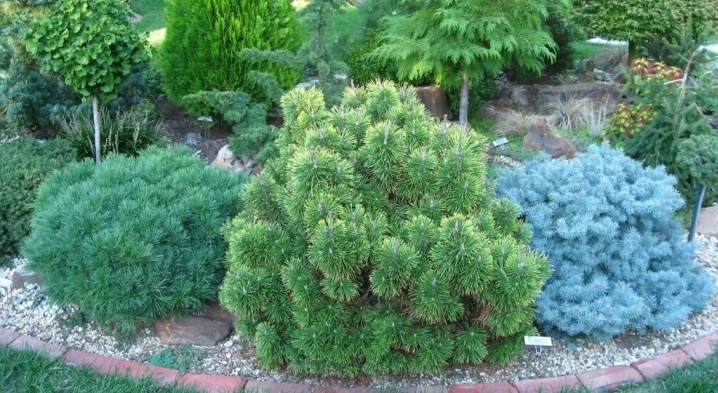
Low-growing conifers are popular with many gardeners. Dwarf pine will be a beautiful decoration of the local area or garden area. It fits perfectly into the composition of garden plants and gives them a special charm.
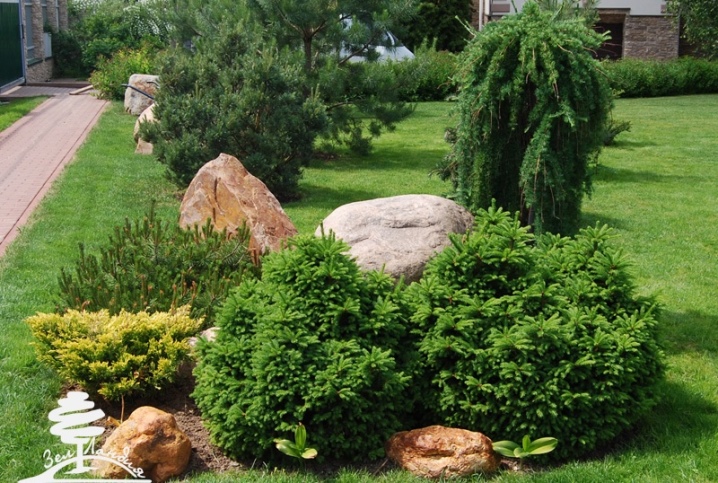
Main characteristics
Dwarf pine varieties are varieties of mountain pine, they differ in a variety of shapes and sizes.
They are a godsend for the garden: compact, undemanding to care for, branch well, have a neat dense crown, grow slowly.
Look great in group compositions and single landings. Coniferous mini-trees will ennoble lawns, anchor dry slopes, and add charm to a Japanese or heather garden. Plant height ranges from 2 cm to 3 m.
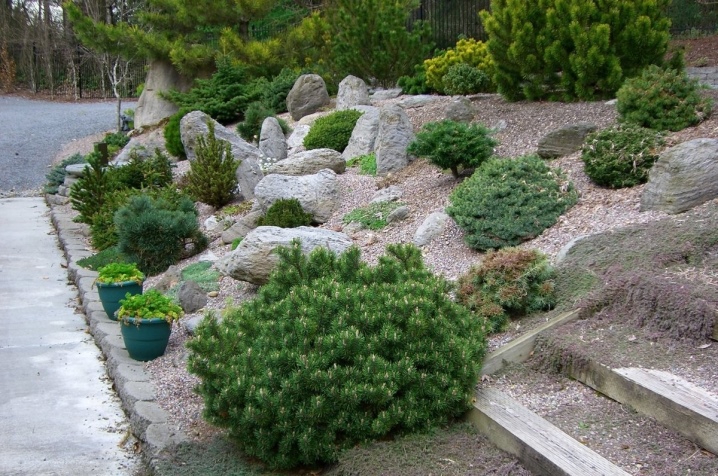
The main advantages of dwarf species:
- frost resistance;
- suitability for growing in any type of soil;
- low susceptibility to disease;
- getting along with other garden plants;
- the possibility of planting in pots and containers;
- long life expectancy.
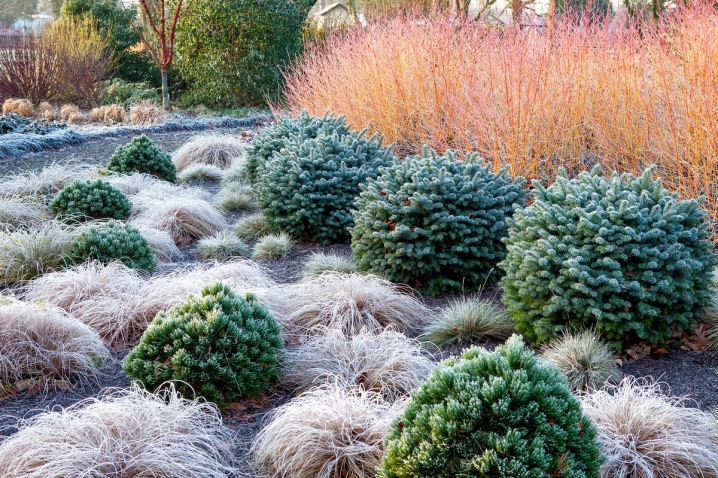
In young pines, the needles are light green; over time, it darkens and in an adult state acquires an emerald hue. The needles are soft, short, with a slight bend. The roots have numerous branches and are firmly rooted in the ground.
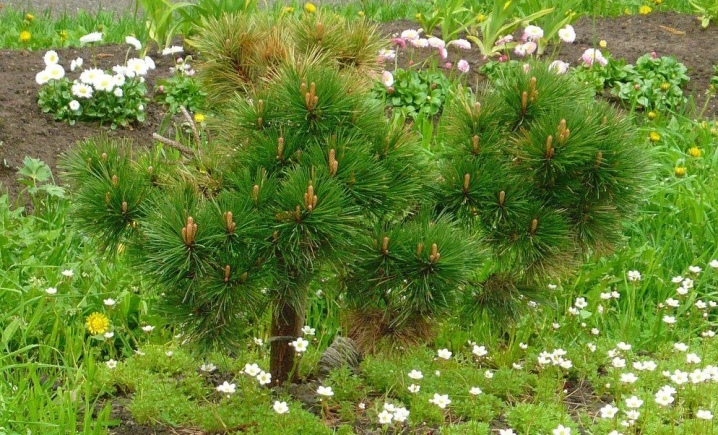
Review of popular varieties
The description of the varieties of dwarf pines is characterized by the breadth and variety of species. Due to their decorative and unpretentious maintenance, dwarf pines are leaders in planting among conifers in private households.

Several representatives are noteworthy.
"Mugus"
This variety has many decorative varieties. The crown is wide and spreading, tolerates a haircut well. It can reach heights of up to three meters. Some varieties have creeping creeping shoots. Needle foliage is long, up to 10-12 cm, dark green in color.
It is unpretentious to the ground, grows well even on dry sandy soils.
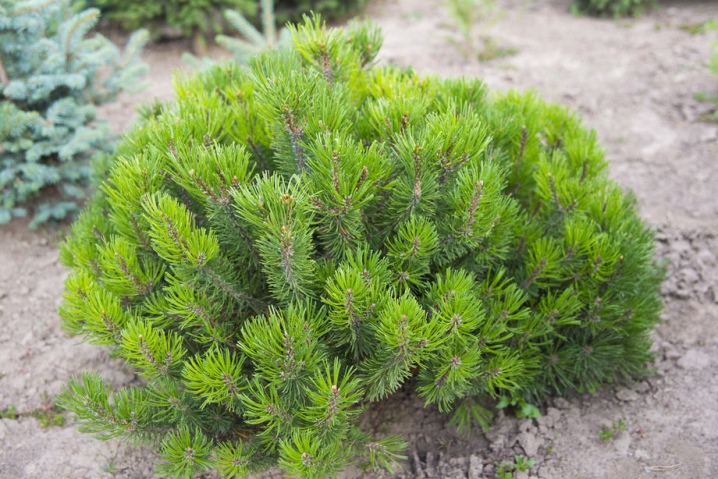
"Pumilio"
Photophilous and hardy plant. Drought is not scary. The maximum height of an adult plant is 1.5-2 m, in diameter it grows up to 3 m. Every year, it adds 5-6 cm in growth. The needles are short and tough, dark green in color with shine. The crown is wide, spherical, easy to trim.
The preferred variety for landscape designers. Often they are framed by ponds and rockeries.
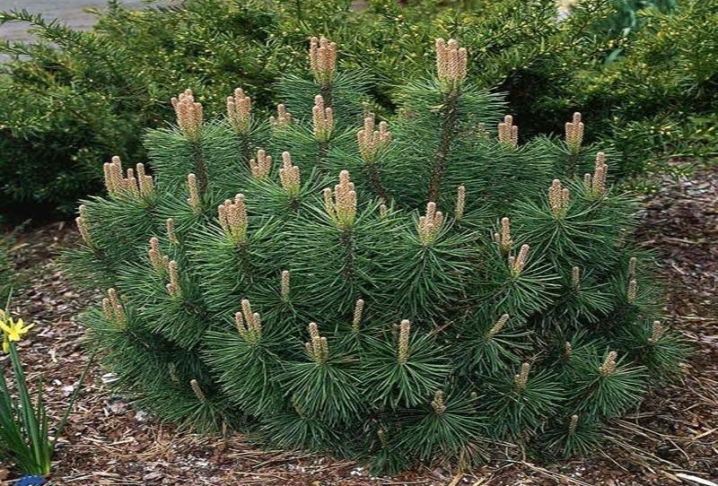
Schmidt Pine (Schmidtii)
Shrub form, neat shoots in large numbers are located close to each other and directed upwards. The growth rate is slow. During the year, it adds about 2-3 cm. It grows in diameter up to 1 m, reaches a maximum height of up to 0.5 m. The needles are long, dark green in color. The bark is tough in structure and has a white color.
Undemanding to watering. Easier to tolerate drought than stagnant moisture in the soil.
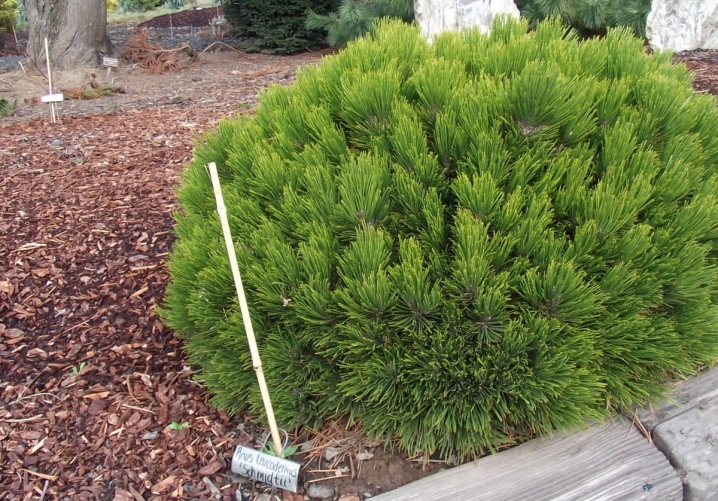
Gnom
The crown is spherical, neat and thick. Grows up to 2 m in height and width. The growth per year is 8-10 cm. The needle-like foliage is short, of an emerald hue. Cones are small, round.
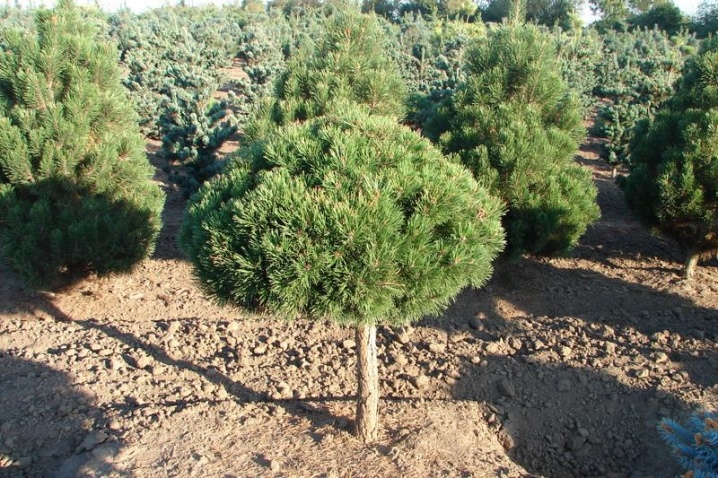
"Pug" (Mops)
This variety has many short shoots that form into a beautiful, lush, rounded crown. Annually it increases in height by 4-5 cm. An adult tree has a height of 1.2-1.5 m, a size of 1-1.3 m in diameter. The needles are of a rich green hue, about 5 cm long. Light-loving plant, drought-resistant. Dislikes shaded areas.
Frost-resistant, suitable for planting in northern regions, as it tolerates cold up to -45 ° C.
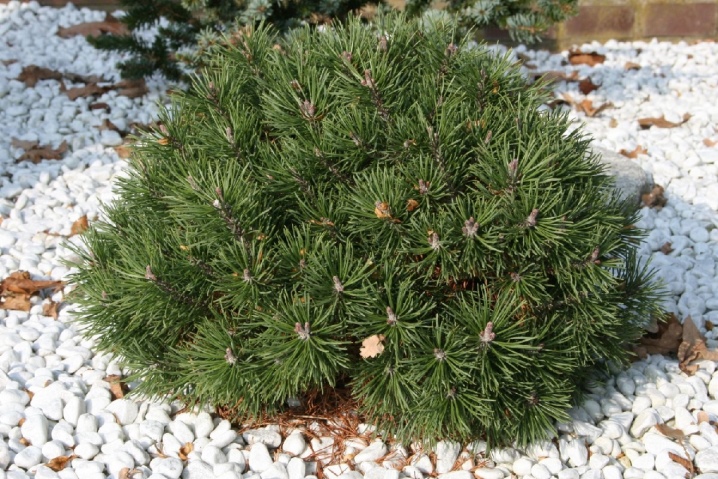
Macopin
Low appearance, grows up to 1 m in height. Differs in elongated and soft needles of a bluish-green hue. Hanging cones located on the upper branches attract the eye. They are initially green in color, but gradually turn brown in color.
The plant feels great both in the sun and in the shade. Dislikes wetlands.

Ophir
A miniature tree, growth does not exceed 0.5 m, shoots spreading 1 m wide. Growth increases by no more than 5 cm per year. The crown is spherical. The needles are short and prickly, in summer they are green, in autumn they begin to brighten, and by winter they acquire a yellow-orange color. Cones are brown, small in size, round in shape.
Winter hardiness is high, it can withstand temperatures up to -30 ° C.

Pine Weymouth or "Minima"
Compact decorative variety. The crown resembles a fluffy ball. Plant height is about 0.6-0.8 m, diameter 1.3-1.5 m. Thin needles are gracefully bent. In spring and summer, they are bright green, in autumn they turn blue.
Loves sunny places and moderately moist soils. The plant has high winter hardiness.
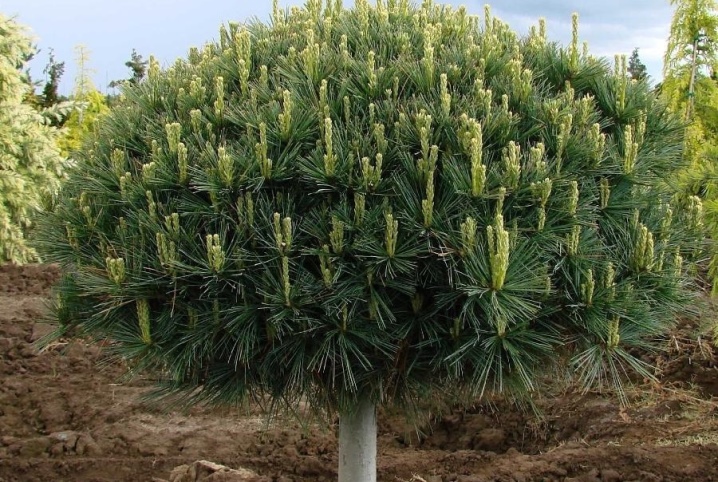
Landing features
The best place for dwarf pines would be open, sunny places. The optimal time for planting is April-May or September-October.
Any soil is acceptable, but if it is too acidic, additional lime should be added.
You need to buy seedlings with a clod of earth, they are usually sold in pots or containers at the nursery or specialty stores.
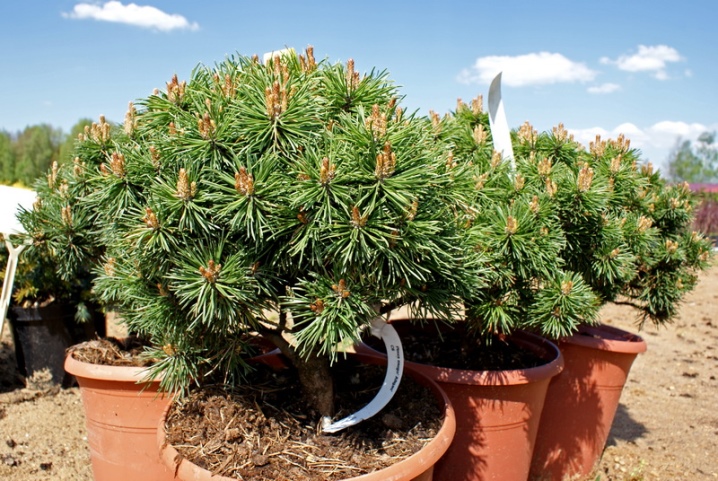
Let us dwell in more detail on the stages of planting.
Pit preparation
It must match the development of the root system. The approximate size is 60 by 60 cm. If you plan to plant several pines next to each other, the distance between the pits should be from 0.5 to 2.5 m, depending on their crown types.
The wider and more luxuriant the crown, the wider the distance.

Drainage of soil
Lay a drainage layer of 20 cm at the bottom of the planting pit, in its capacity, it is permissible to use broken brick, gravel or crushed stone. They promote soil drainage and subsequently prevent water stagnation.
Sprinkle on top with garden soil, you can mix it with compost or mineral fertilizers, which contain nitrogen.
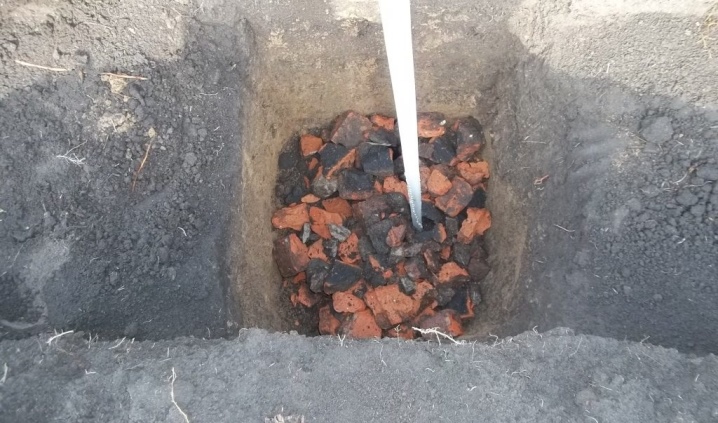
Landing
Lower the seedling with a clod of earth into the hole. Place the root collar on a level with the ground or slightly above its surface. Fill the hole with soil and compact a little. At 15 cm from the tree, slightly raise the soil, forming a roller around it, the space inside can be filled with sawdust.
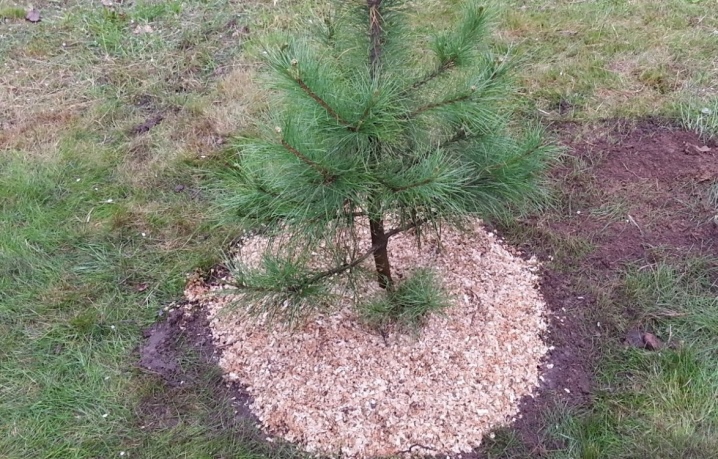
Watering the plant
It relieves thirst and the formation of air voids in the ground.
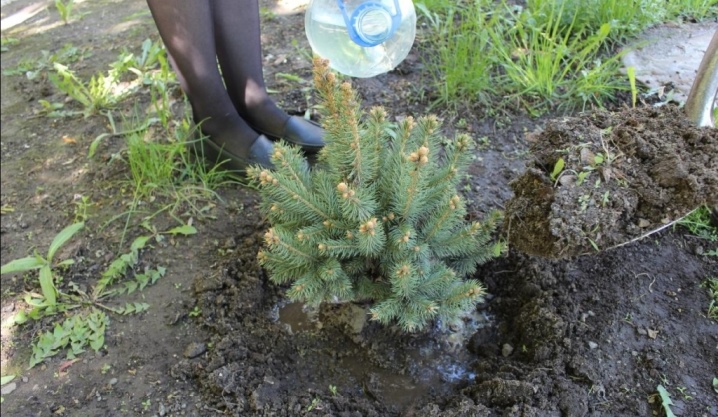
Care Tips
Dwarf pines are unpretentious plants, they will be a wonderful decoration for a summer residence. More thorough care is required in the first 2 months. It includes daily inspection and watering.
In hot and sunny weather, you need to cover the plant from the scorching rays.
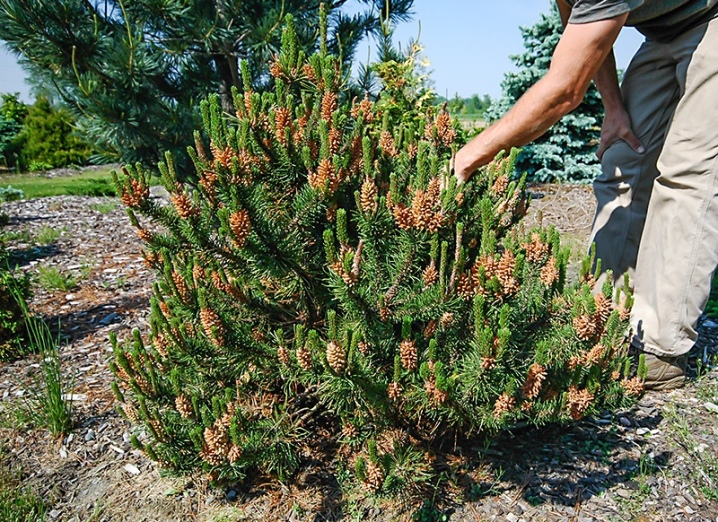
During the growth period, pines need weeding and loosening the soil around the trunks. Later, when crumbling needles appear, loosening is no longer required - natural mulching of the area adjacent to the plant is formed.
There is no need to remove fallen needles, they serve as a natural fertilizer.
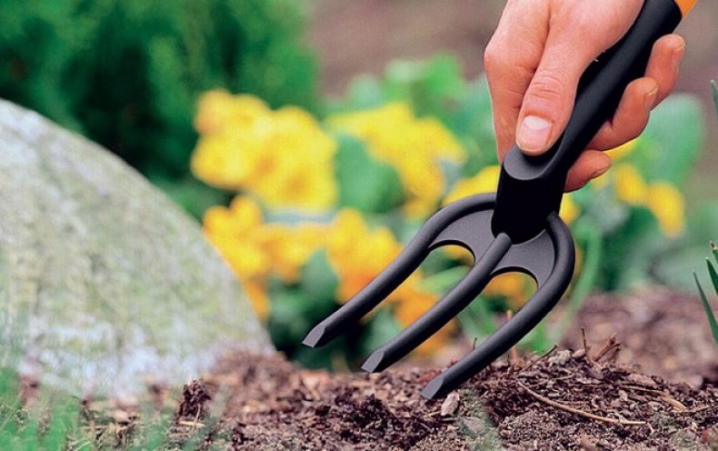
In need of fertilizing with minerals only young plants in the first 3-5 years after planting.
Special complexes for coniferous crops should be used.
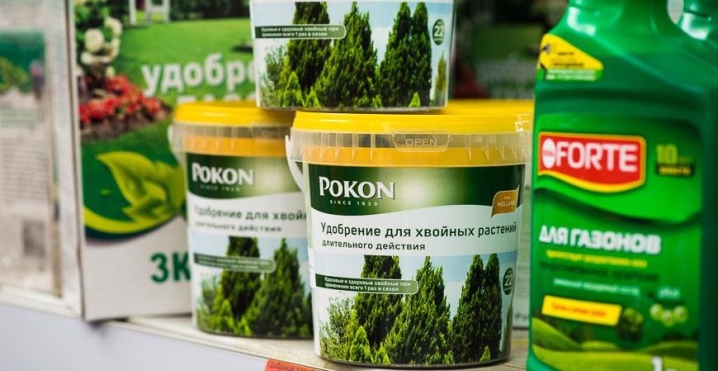
It is advisable to cover the trees of the first year of planting (sometimes the second) for the winter with spruce branches. With the onset of stably warm spring days, the covering material should be removed. The branches of mature plants are able to withstand a thick layer of snow and are immune to temperature changes, so they do not need shelter. They winter well outdoors.
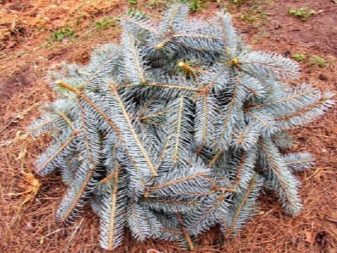
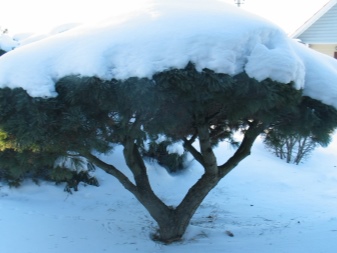
Creeping mini-ephedra are often planted in containers or flower pots. So that the containers are preserved and not damaged, they are brought into an unheated room for the winter.
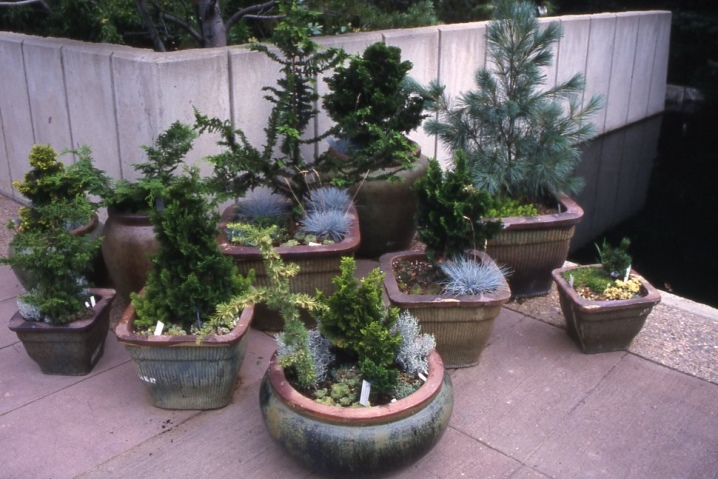
In the spring, when the snow has completely melted, it is recommended to remove dry branches and water the pine trees with warm water.
So they will react faster to the change of seasons, and the growing processes will occur faster.
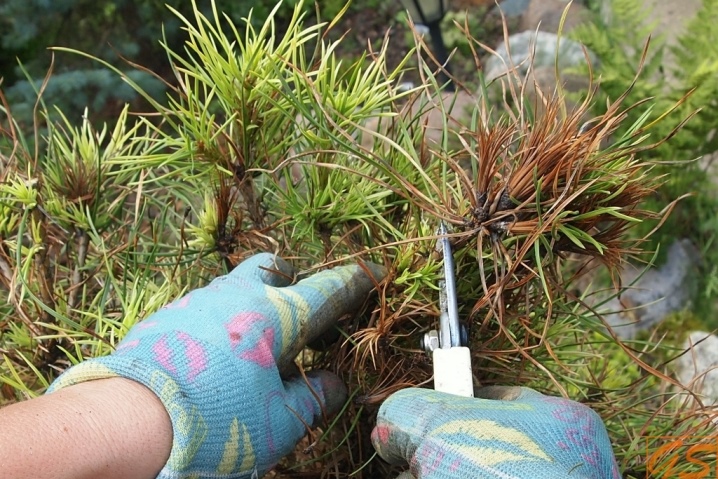
Dwarf pines can form the desired crown. For this, the growth buds of the shoots are removed or new branches are cut off.
A haircut can be carried out in spring; in summer, only shortening of regrown shoots is permissible.
It is good to use a hand pruner for pruning, dense and thick branches can be removed with a lopper.
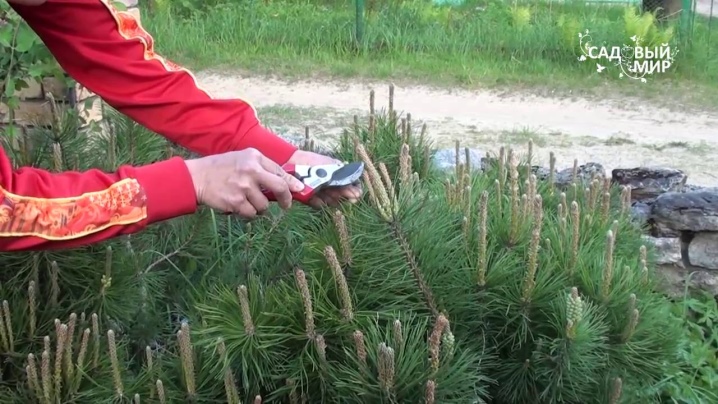
Reproduction
The propagation of dwarf pines by amateur gardeners can be carried out using the seed method or cuttings.
Seeds
The seed method is longer and more laborious. Cones with seeds suitable for reproduction appear only after 6-8 years. They resemble small grains. They are taken out of the ripe bud and placed in a paper envelope, which is placed in a warm place. Shake it periodically.
Having warmed up, the grains open on their own, and seeds fall out of their sinuses.
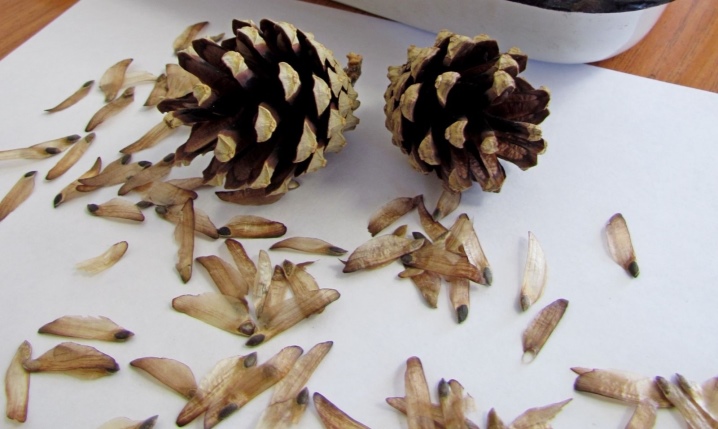
Sowing is carried out in the autumn. Seeds are lowered shallowly into a container with moistened sand and taken out into a cool room (veranda, balcony, basement).
The air temperature should not exceed 5-7 degrees Celsius.
In the spring, the container must be brought into the heat, the seeds must be taken out and sown again in the previously prepared and loosened soil to a depth of 2 cm.

Place the sown container in a bright and warm place (best on a windowsill) and cover with foil or glass. Make sure that the soil always remains moist; for this, periodically water it with water at room temperature. When the first shoots appear, the film or glass can be removed.
The seedlings need supervision and care, they can be transplanted into open ground only in the fall, and with the onset of cold weather, they must be covered with spruce branches.
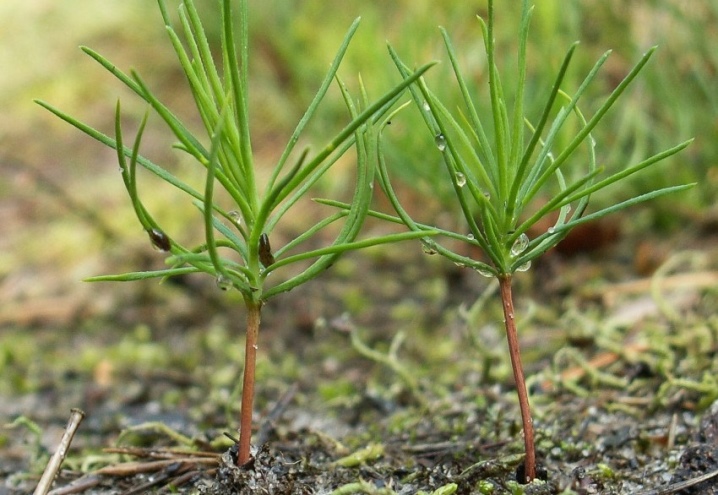
Cuttings
Reproduction is possible in the spring. The cuttings are cut with the part of the tree to which they were attached and lowered into the water for about 3 hours so that all the resins come out.
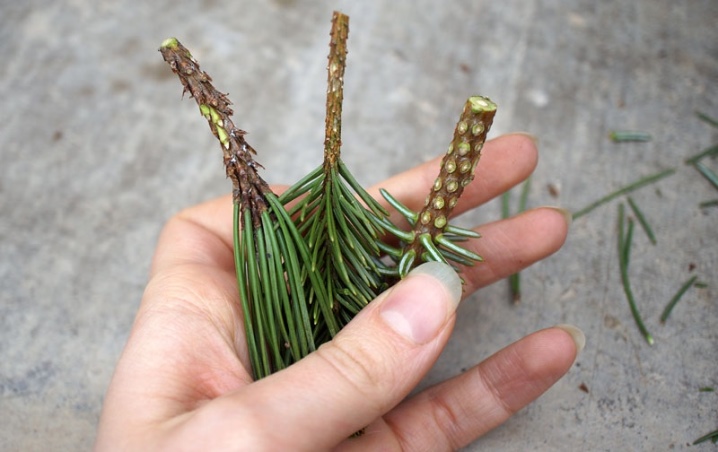
Planting is carried out in a previously prepared container with fertile soil (garden soil, peat and sand are mixed in equal proportions). Deepening should be 3-5 cm and be 10 cm apart from each other. Cover the container with foil and put it in a bright place. You can plant cuttings in a greenhouse or greenhouse. Care consists in moderate watering and light loosening.
It will take a year for the firm rooting of dwarf conifers, and only after this period can the pines be planted in a permanent place.
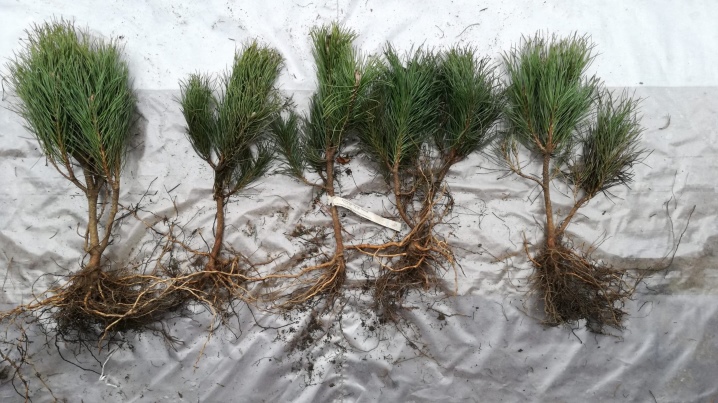
Use in landscape design
Decorative low-growing pines will serve as a wonderful decoration for a garden or area around the house. Single or group plantings will look great and will easily fit into a wide variety of styles.
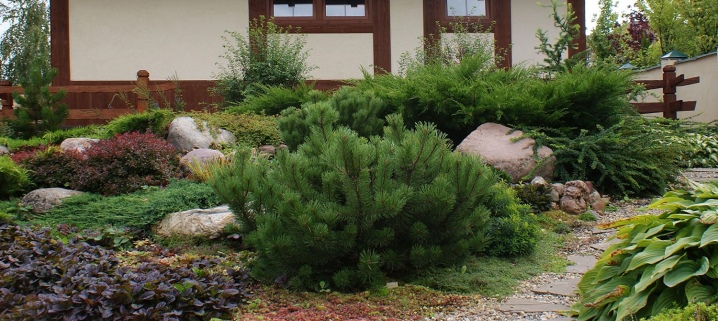
Look great when decorating alpine slides and multi-tiered compositions. Often they are used to decorate hedges, banks of reservoirs, rocky slopes.
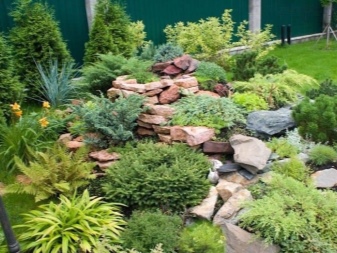

They look harmonious on lawns, in heather gardens, surrounded by cereals and bright large flowers.

Container plantings will look spectacular when decorating a terrace, balcony or building entrance.
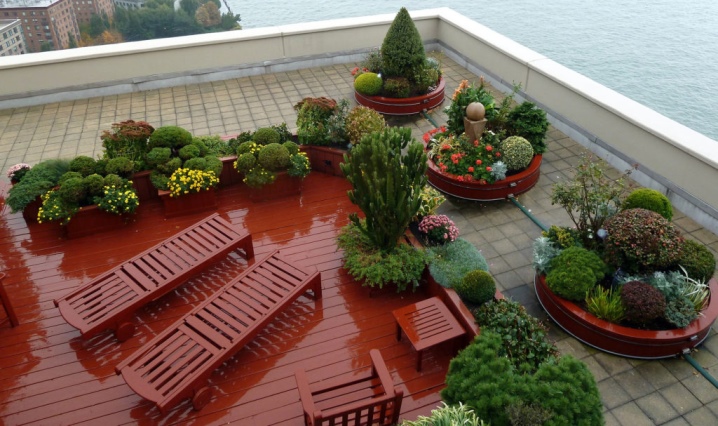
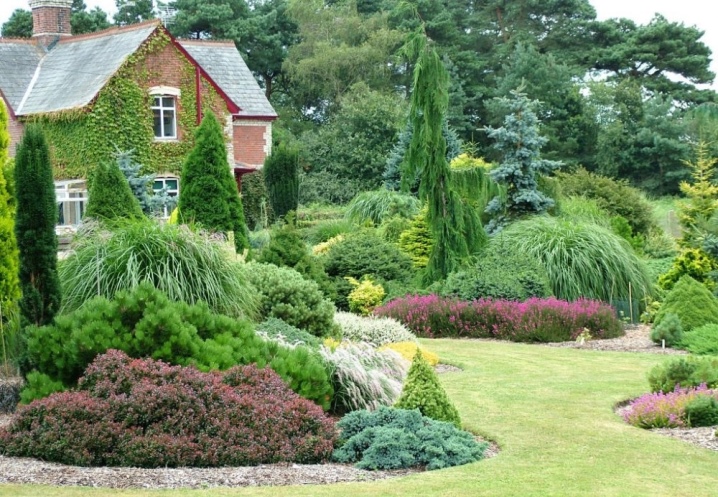
Even more useful and interesting information about dwarf pines can be found in the following video.



































































The comment was sent successfully.